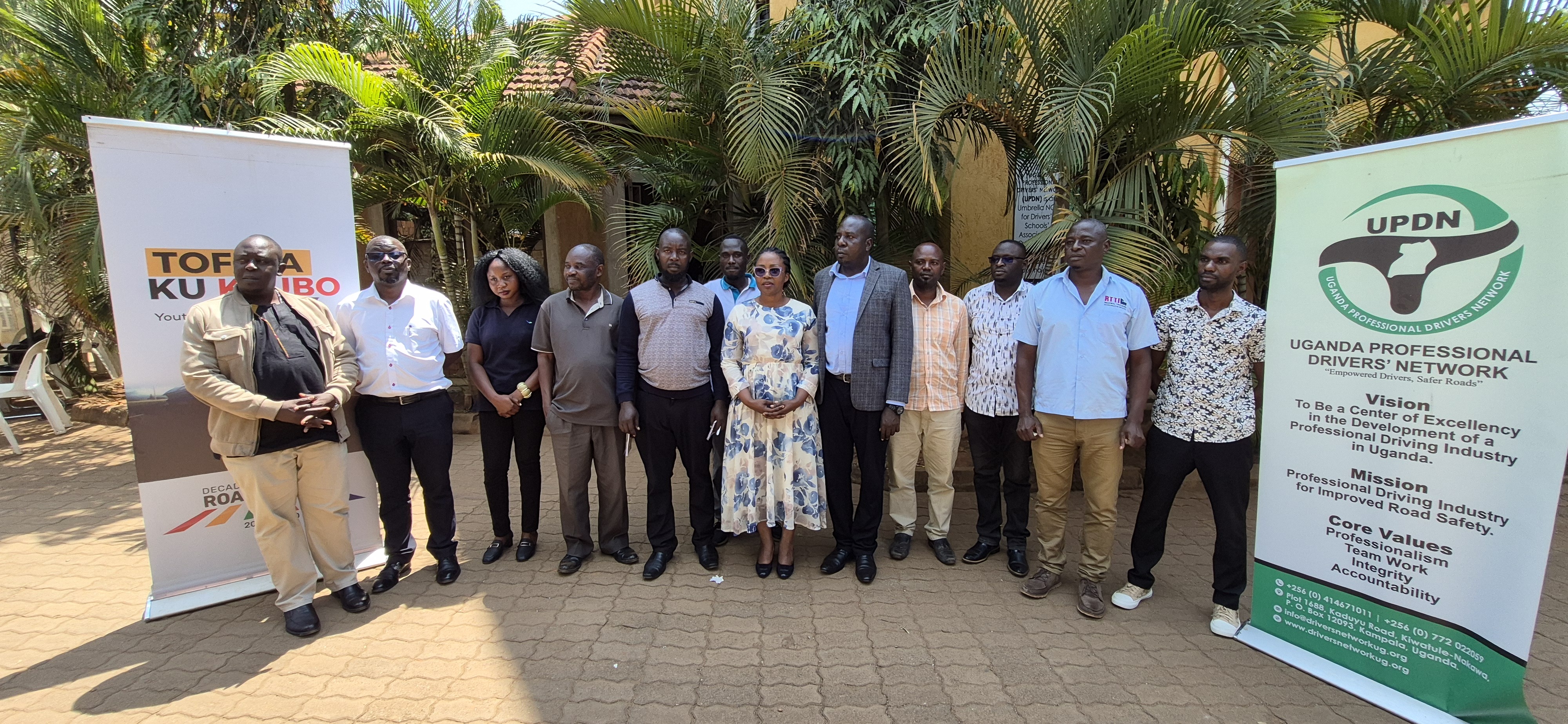April 17, 2025

In this Q&A, the Global Health Advocacy Incubator (GHAI) interviews Timothy Chemonges, Executive Director, Centre for Policy Analysis (CEPA) and Omongo Ndugu, Executive Director, Uganda Professional Drivers’ Network (UPDN), key civil society partners collaborating with GHAI’s Road Safety Program for effective road safety policies. The discussion highlights the significance of Uganda's newly adopted speed limit regulations, which took effect on February 14, 2025. The updated regulations impose a maximum speed of 30 km/h in high-risk areas such as schools, hospitals, markets and business centers to enhance safety and protect communities.
1. How does CEPA and UPDN’s work contribute to advancing road safety policies?
CEPA: At CEPA, we’re passionate about creating a Uganda where every voice matters. Our mission is to bridge the gap between citizens and decision-makers by promoting transparency, accountability and evidence-based policymaking. Through research, advocacy and dialogue, we strive to make governance more inclusive and responsive to the needs of all Ugandans.
UPDN: UPDN is more than just a drivers’ network, it’s a movement. We bring together drivers from 38 drivers’ associations, organizations of employers in the transport sector and driver training schools across the country to champion road safety, professional standards and improve commercial drivers’ welfare. Our goal is to empower drivers to be active participants in shaping policies that affect their lives and the safety of every road user in Uganda.
2. What are the road safety challenges in Uganda?
UPDN: While there has been road safety progress, the 2024 Uganda Police Annual Crime Report revealed an increase in road crash deaths by 7% (from 4,806 to 5,144) and those seriously injured by 1.7% (from 15,227 to 16,736). These are not just numbers, they represent our communities; mothers, fathers, children and friends whose lives were cut short or forever changed. Speeding is the leading cause of road crash fatalities and serious injuries in Uganda, responsible for nearly half (44.5%) of all crashes. The most vulnerable being- pedestrians, motorcyclists and passengers account for 86% of road fatalities. Excessive speed has turned busy streets into potential death traps, particularly in urban areas like Kampala, Jinja, Mbarara and others. In high traffic zones near schools, markets, churches and hospitals—places central to our communities—the lack of updated speed regulations has left pedestrians, especially school children and motorcyclists, exposed to constant danger from speeding drivers.
The speed limit regulations in Uganda were last updated in 2004, marking 20 years, with maximum speed limit of 50km/hr for urban areas. Some of the road sections, especially highways, had maximum speed limits of 100km/hr, compared to 70km/hr per global best practice of single carriageways. Since 2004, Uganda has experienced considerable infrastructural upgrades and developments including the introduction of the Northern by-pass and the Entebbe expressway, which required speed limit provisions within our speed regulations.
3. How do the updated speed guidelines impact communities in Uganda?
CEPA: For parents, safer speed limits mean children can walk to school without worry. For boda boda (motorcycle taxi) riders and street vendors, it means a safer workspace. This is a big step towards making our roads livable and safe for all road users. For drivers, it provides a clear, enforceable standard to follow. This policy isn’t just about slowing down vehicles, it’s about saving lives and creating communities where everyone can thrive.
Local governments, while responsible for the construction and maintenance of urban community access roads in districts, as well as city and municipal roads in their respective cities or municipalities, had never been explicitly assigned a role in traffic management. The updated speed limits give local governments the option to request permission from the Ministry of Works and Transport (MoWT) to modify speed limits on roads, which fall under their jurisdiction.
4. Which other civil society organizations contributed to this road safety policy win?
CEPA and UPDN: This achievement was a collaborative effort. The MoWT led the process, supported by CEPA, UPDN the Road Safety Coalition Uganda, as well as local governments and drivers’ associations. Media houses also played a crucial role in raising awareness and building public support.
GHAI provided invaluable technical expertise, sharing international best practices and helping to strengthen the legal framework. We worked closely with the Global Road Safety Partnership, which provided financial support and technical reviews. One of the most inspiring aspects of this work was the level of political will gained for road safety issues. Thanks to years of collaboration among civil society organizations, the government and academia, we’re now celebrating a major policy victory.
5. What’s the next step?
CEPA and UPDN: This road safety policy win is call to action for the Uganda government to focus on implementation. CEPA and UPDN are collaborating with MoWT, the Uganda Police Force and local government authorities to roll out nationwide educational campaigns on the negative impacts of speeding, driver training programs and enforcement mechanisms for speed.
Among the planned activities; CEPA, UPDN and the MoWT have planned a launch of the new speeding regulations to not only officially celebrate but also utilize the event as an advocacy opportunity. Advocates are working toward integration of speed management into urban planning and to improve data systems to monitor compliance. The National Road Safety Action Plan, adopted by the MoWT, provides a roadmap for addressing other critical risk factors including drink driving, helmet use and pedestrian safety. These collective efforts will help Uganda foster a culture of safety that safeguards all road users, enabling communities to thrive.




